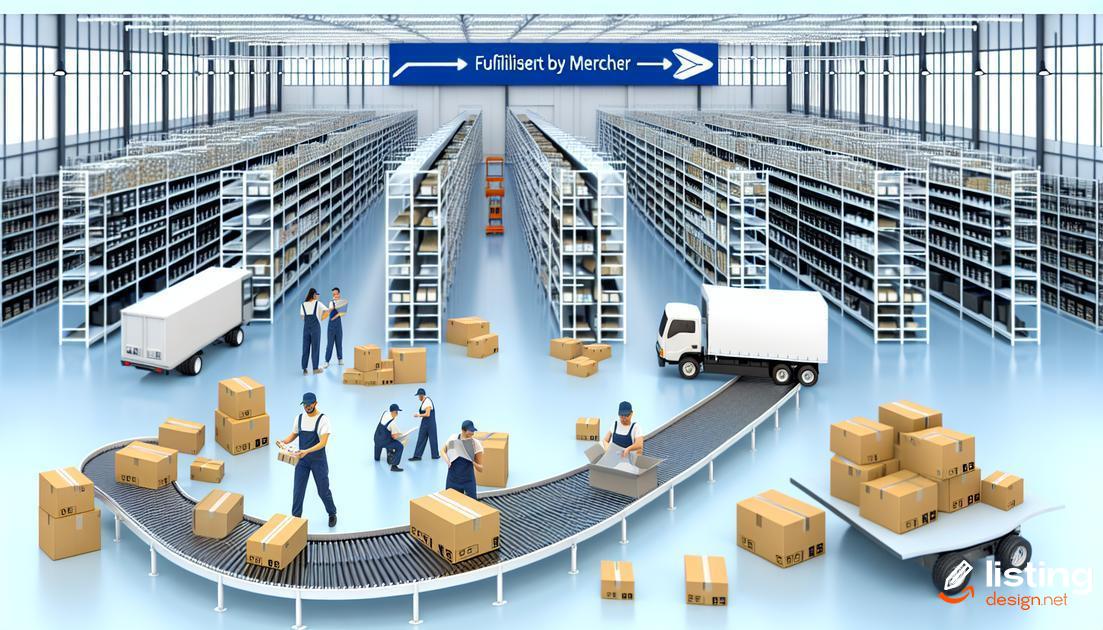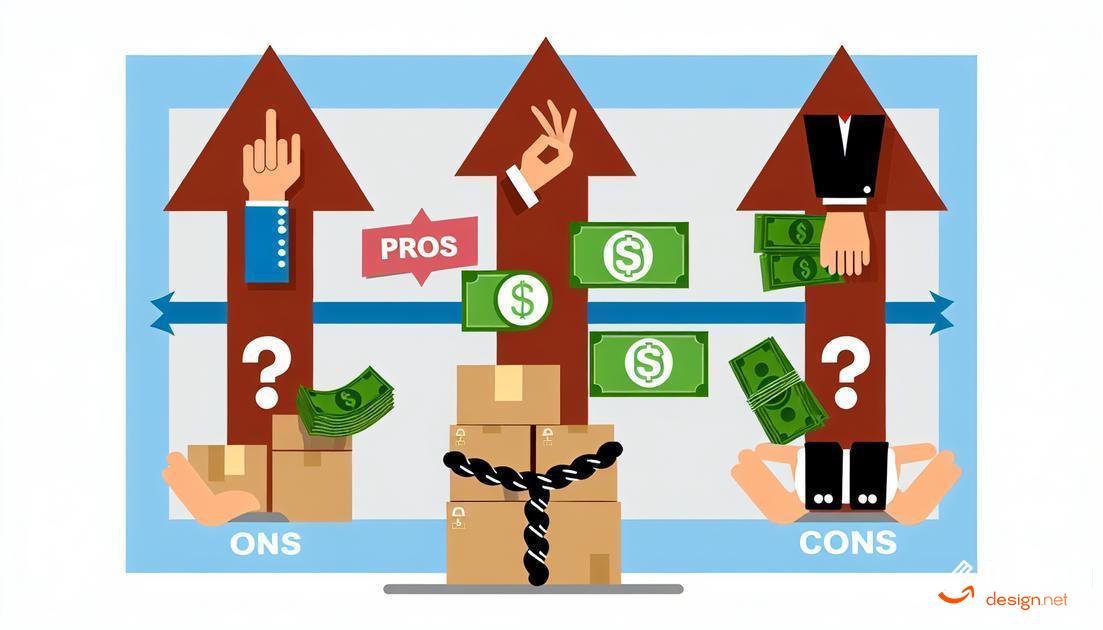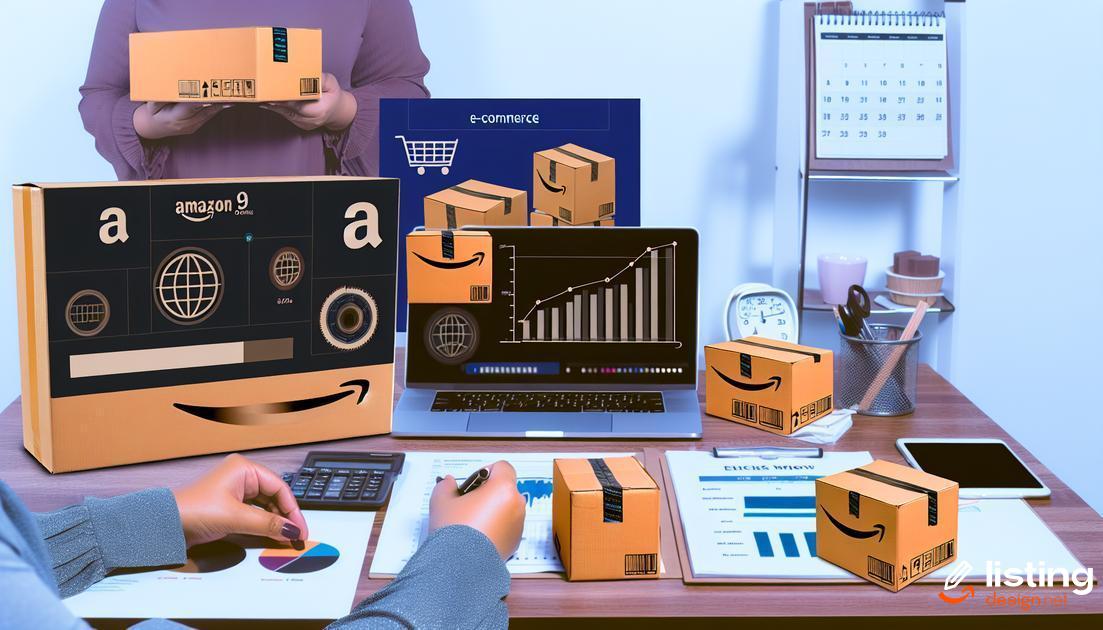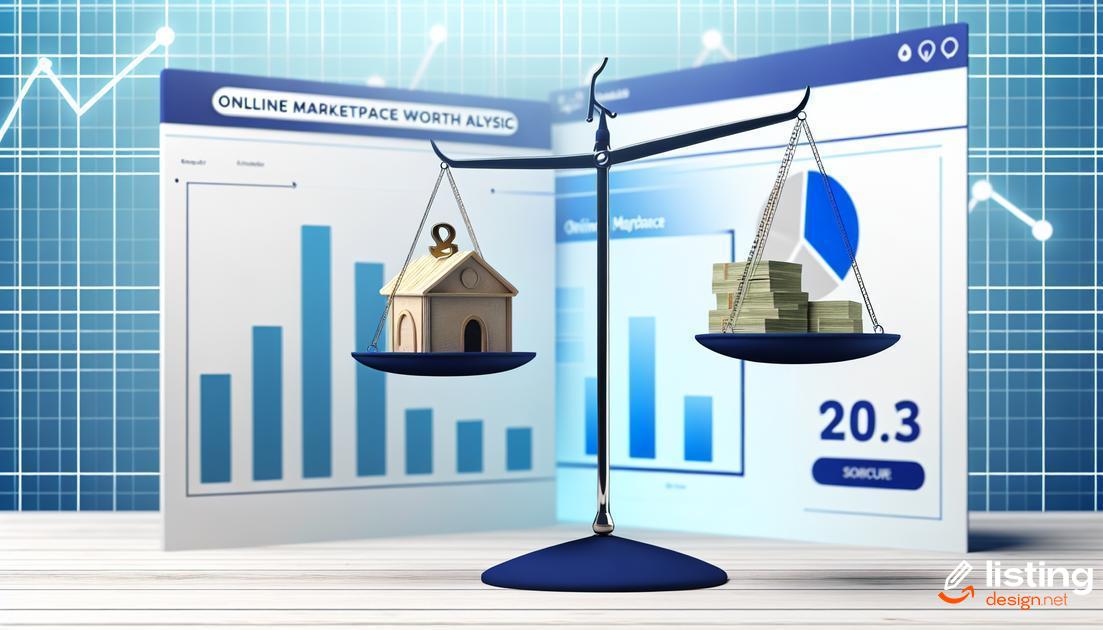Amazon FBA worth analysis is a critical aspect for any aspiring online seller in 2023. Understanding the intricacies, costs, and potential profits can help you make an informed decision. This post will delve into various aspects of Amazon FBA, from the basic workings to profitability case studies.
Amazon FBA, or Fulfillment by Amazon, has become a popular choice for many entrepreneurs looking to store and ship their products conveniently. But is it really worth it? We’ll explore the initial and ongoing costs, share case studies, and provide strategies to maximize your profits to help you determine if Amazon FBA is the right move for your business.
Table of Contents
What is Amazon FBA?
Amazon FBA stands for Fulfillment by Amazon, a service provided by Amazon that allows sellers to store their products in Amazon’s fulfillment centers. When an order is placed, Amazon handles the picking, packing, shipping, and customer service for these products. This can significantly streamline the selling process and allow business owners to scale without having to manage logistics themselves.
Amazon FBA works by having sellers ship their inventory to Amazon’s warehouses. Once the products are in the fulfillment centers, they become available for Amazon Prime and other customers with fast and reliable shipping options. Sellers can then focus on other aspects of their business, such as marketing and sourcing new products.
Utilizing Amazon FBA can be advantageous as it leverages Amazon’s extensive fulfillment network and customer trust. Sellers often benefit from increased visibility and higher sales thanks to Amazon’s reputation and the convenience offered to shoppers. Additionally, Amazon handles returns and customer inquiries, further reducing the workload for the seller.
While Amazon FBA offers many benefits, it’s crucial to understand the costs involved, such as storage fees, fulfillment fees, and long-term storage fees. These costs can impact profitability, making it essential to carefully calculate potential expenses and revenue.
Overall, Amazon FBA can be a powerful tool for business owners looking to expand their reach and streamline operations, but understanding the service’s intricacies and conducting thorough financial analysis is key to maximizing its potential.
How Amazon FBA Works

Registration
To start with Amazon FBA, you first need to create a seller account on Amazon. This involves providing necessary information about your business and agreeing to Amazon’s terms and conditions.
Listing Products
Once your account is set up, you will need to list the products you want to sell. This includes adding product descriptions, images, pricing, and other relevant details. Good product listings are crucial for attracting customers.
Shipping to Amazon
After your products are listed, you must send your inventory to Amazon’s fulfillment centers. You need to package your products following Amazon’s guidelines to avoid any issues during the shipping process. Amazon takes care of storage, packaging, and shipping from its fulfillment centers.
Managing Inventory
Amazon FBA offers tools to help you manage your inventory effectively. You can monitor stock levels, restock items, and keep track of sales through Amazon’s seller dashboard.
Order Handling
When a customer places an order, Amazon handles the picking, packing, and shipping. Amazon also takes care of customer service and returns, which significantly reduces the workload on your end.
Fees
It’s essential to be aware of the fees associated with Amazon FBA. These include storage fees, fulfillment fees, and other miscellaneous costs. Understanding these fees can help you price your products competitively and ensure profitability.
Initial Costs of Starting Amazon FBA
The initial costs of starting an Amazon FBA business can vary significantly depending on various factors such as product type, quantity, and sourcing methods. One of the primary expenses is the cost of inventory. Purchasing your inventory upfront is essential, and this cost can range from a few hundred to several thousand dollars based on the product you choose to sell.
Next, you have to consider the shipping costs to send your inventory to Amazon warehouses. These costs can fluctuate based on the size and weight of your products and the distance they need to travel. Using Amazon’s partnered carriers might help reduce these expenses.
Another critical cost is the Amazon FBA fees. These include fulfillment fees, which are charged per unit and can differ depending on the size and weight of the item, and monthly storage fees for keeping your products in Amazon’s warehouse.
Moreover, you’ll need to account for the cost of creating product listings and any enhancements such as professional photos or videos that help make your product more appealing to potential buyers. You might also consider investing in advertising costs to promote your listings on Amazon’s platform, which can drive traffic and increase sales.
A few other potential expenses include the cost of tools and software to manage your FBA business. These tools can help with keyword research, inventory management, and sales tracking, ultimately leading to more informed decisions and higher profitability.
Ongoing Costs and Fees

When diving into Amazon FBA ongoing costs and fees, one must take into account various elements that impact profitability. Monthly storage fees are applied based on the volume of your inventory stored in Amazon’s warehouses. These fees escalate during peak seasons.
Another key fee involves fulfillment fees, which are costs Amazon charges for packing and shipping your products. These fees vary depending on the size and weight of items.
Don’t overlook long-term storage fees. Amazon imposes these fees on items stored for more than 365 days, which could significantly impact overall costs if inventory isn’t selling quickly.
Additionally, there are variable closing fees, particularly for media products like books, DVDs, and music. This fee is based on either a flat rate or a percentage of the item’s price.
Returns processing fees are another aspect, charged when customers return products. This covers the costs associated with handling and restocking returned items.
Finally, take into account any advertising costs, such as Amazon Sponsored Products, which can drive traffic but also add to ongoing expenses.
Profitability Case Studies
Exploring various profitability case studies can shed light on whether Amazon FBA is a viable option for your business in 2023. Examining real-world examples helps understand the challenges and success factors involved. One retailer selling tech gadgets experienced a 300% increase in revenue after leveraging Amazon FBA’s storage and shipping solutions. Conversely, a small brand encountered difficulties due to high competition and advertising costs, resulting in only marginal profits.
Another case centers on a home decor company that successfully scaled up by utilizing Amazon FBA. Their ability to handle sudden spikes in demand without logistical headaches translated into higher customer satisfaction and repeat business. However, it’s crucial to highlight that each case study reflects unique variables such as product type, marketing strategy, and cost management.
For instance, a health supplement business saw a 40% profit increase within six months of adopting Amazon FBA. Their success was attributed to targeted advertising and competitive pricing. On the contrary, a niche toy seller found that after accounting for Amazon’s fees and shipping costs, their net profit margins shrank, questioning the overall profitability.
These case studies illustrate the diverse outcomes businesses may face. Analyzing these examples can help make informed decisions about opting for Amazon FBA by weighing potential returns against possible risks.
Pros and Cons of Amazon FBA

Pros of Amazon FBA
- Prime Eligibility: Products stored with FBA are eligible for Amazon Prime, offering faster shipping options to customers.
- Customer Service: Amazon handles customer service and returns, saving you time and managing consumer expectations effectively.
- Storage Optimization: FBA offers storage solutions to manage inventory efficiently, including seasonal stock fluctuations.
- Scalability: Easily scale your business without worrying about warehousing and logistics as Amazon takes care of these aspects.
- Buy Box Advantage: FBA products often get a preference for the Buy Box, potentially increasing sales.
Cons of Amazon FBA
- Fees: The costs associated with FBA, including storage and fulfillment fees, can be significant and affect profitability.
- Inventory Management: Loss of control over your inventory, as it is stored and managed by Amazon, can be challenging.
- Competition: High competition on Amazon’s platform can make it difficult for your products to stand out.
- Fee Adjustments: Amazon may change FBA fees periodically, impacting your cost structure and requiring constant monitoring.
- Long-Term Storage Fees: Holding inventory for extended periods can lead to high long-term storage fees.
Strategies for Maximizing Profits
One of the key strategies for maximizing profits with Amazon FBA is optimizing your product listings. Ensure that your product titles, descriptions, and bullet points are rich in keywords and provide detailed information. High-quality images and videos can also enhance your listings and make your products more appealing to potential customers.
Effective inventory management is another crucial factor. Keeping track of your inventory levels and using Amazon’s tools to forecast demand can help you avoid stockouts or overstocking, both of which can impact your profits.
Using Amazon Advertising can boost your product visibility. Sponsored products and brands can significantly increase your sales if strategically utilized. Monitor your ad spend and return on investment to ensure your marketing efforts are cost-effective.
Consider expanding your product line. Diversifying your offerings can attract a broader customer base and reduce dependence on a single product’s performance. This can help stabilize your revenue streams and enhance profitability.
Leverage customer reviews and feedback. Positive reviews can significantly boost your sales, while addressing negative feedback promptly can improve customer satisfaction and retention. Encourage satisfied customers to leave reviews and consider using feedback for product improvements.
Price optimization is essential. Regularly monitor competitor prices and adjust your pricing strategies accordingly. Use dynamic pricing tools to stay competitive while maximizing your profit margins.
Streamlining operations can also enhance profitability. Efficient processes, from sourcing to shipping, reduce costs and improve margins. Utilize Amazon’s fulfillment options to streamline logistics and focus on growing your business.
Is Amazon FBA Worth It for Your Business?

Amazon FBA (Fulfillment by Amazon) is a service offered by Amazon that allows businesses to store their products in Amazon’s fulfillment centers. Amazon takes care of storage, packaging, and shipping on behalf of the seller. This can be a game-changer for many businesses, as it leverages Amazon’s advanced logistics network.
To use Amazon FBA, you first need to sign up for the service and send your inventory to Amazon’s warehouses. From there, Amazon handles storage, order processing, customer service, and returns. The system is designed to help you scale your business without worrying about logistics.
The initial costs for starting with Amazon FBA include inventory costs, shipping your products to Amazon’s warehouses, and Amazon’s setup fees. These can vary widely based on the type of product and the volume of inventory. It’s important to calculate these costs carefully to understand your upfront investment.
Besides initial costs, there are ongoing fees, including storage fees, fulfillment fees, and additional service fees if you opt for optional services like labeling and prep. These ongoing costs can eat into your profit margins, so continuous monitoring and cost analysis are essential.
Profitability Case Studies show a mixed bag of results. While some businesses see a significant profit boost due to reduced logistic hassles and larger customer reach, others struggle with thin margins and high fees. Understanding your product niche and cost structure is crucial for success.
There are several pros and cons to consider. On the pro side, you benefit from Amazon’s trusted brand, extensive logistics network, and customer service. However, the cons include higher fees, less control over shipping processes, and potential competition directly from Amazon.
To maximize profits, consider strategies like optimizing your product listings, using Amazon’s advertising services, and continually analyzing your sales and costs. Vigilance and adaptability are key to making Amazon FBA work for your business.
Deciding whether Amazon FBA is worth it for your business depends on various factors, including the nature of your products, your business model, and your capacity to manage the associated costs and logistics. A thorough analysis and understanding of both the benefits and drawbacks are essential before making your decision.


